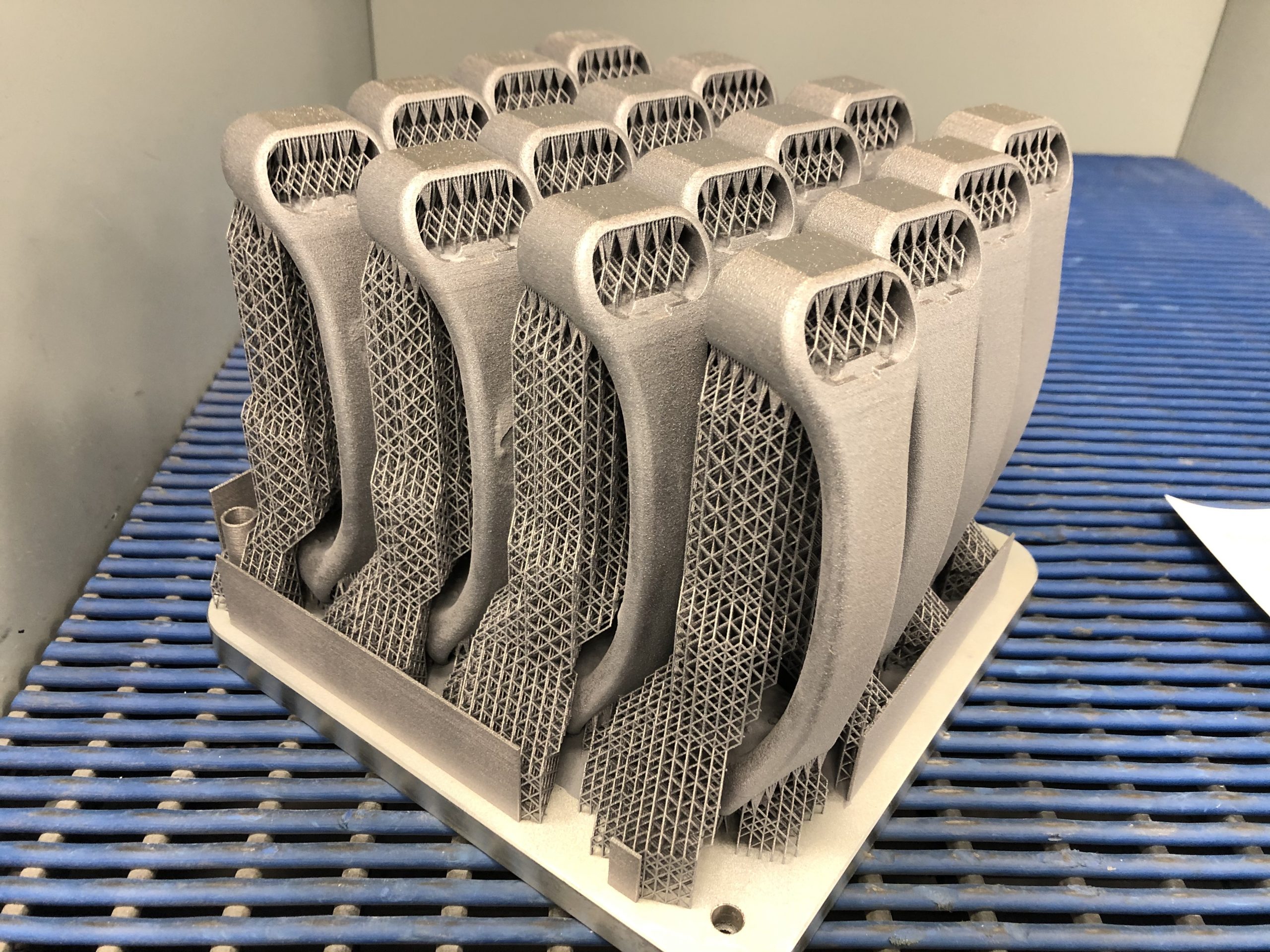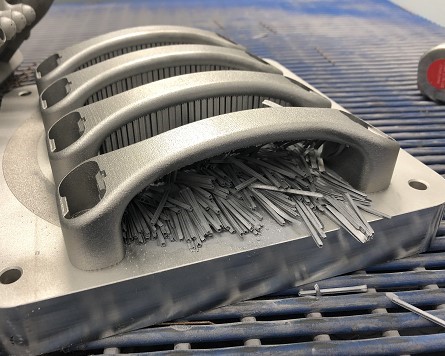Leading European aerospace engineering service provider Hyde Aero Products (HAP) has called on the expertise of global engineering firm Renishaw and the National Centre for Additive Manufacturing (NCAM), based at the Manufacturing Technology Centre (MTC) in the UK, to develop 3D printed door handles for two Class II helicopters supplied by its customer Leonardo Helicopters as part of a test case for metal additive manufacturing.
Having recently established a subsidiary dedicated to 3D printing, Hyde Additive Technologies, HAP has begun investing in polymer 3D printing technologies which have already provided cost savings to the company. Now, the firm is looking to harness the benefits of metal additive manufacturing, too.
“The DRAMA program came along at the perfect time for Hyde as we develop our AM capabilities in metal,” said Paul Mellor, Technical Director of HAP. “The work on the helicopter door handles gave us great insight into the AM design for manufacture process, and will inform our future discussions with Leonardo.”

The DRAMA program
The MTC commenced the DRAMA (Digital Reconfigurable Additive Manufacturing facilities for Aerospace) project in 2017 with the goal of improving the UK’s aerospace supply chain using a unique additive manufacturing digital learning factory.
The project involved creating a digitally-twinned virtual environment for the aerospace sector’s additive manufacturing process chain in order to minimize the risk, cost and time to market for companies seeking to utilize the technology to design and build high-performance parts.
Testbed facilities are located at the MTC’s NCAM in Coventry and at Renishaw’s AM Solutions Centre in Staffordshire, with the project receiving an initial £14.3 million as part of a program from the UK’s Aerospace Technology Institute (ATI).
Since then, the project has seen the building of a new open-access metal powder bed facility at NCAM and provided support for supply chain companies to aid their additive manufacturing product and process development. An online resource library called the Knowledge Hub was also established as part of the project.

3D printing helicopter components
In line with its wish to move into metal additive manufacturing, HAP identified two Class II helicopter parts from its customer Leonardo Helicopters as test cases for the technology. The parts in question were the Forward and Aft Service Door Handles of the helicopter and were chosen as part of a weight reduction initiative.
Upon partnering with the NCAM and Renishaw, HAP wanted to find out whether metal 3D printing could provide a viable and cost-effective solution for the manufacture of the handles, and how to develop a business case for adopting metal additive manufacturing technologies going forwards.
The three companies agreed a process development support package to be delivered by NCAM and engineers from Renishaw, starting with a process design and topology optimization study. A baseline stress analysis was carried out on a current machined-from-solid AlSi10Mg aluminum alloy handle in order to evaluate the performance of handles featuring a variety of internal lattice structures. A hollow handle was also evaluated, and the tests indicated weight savings of between 20 and 45 percent could be achieved with metal 3D printing.
The first build of the part was undertaken on a laser powder bed fusion (LPBF) AM500Q 3D printer from Renishaw. A selection of vertically printed Forward and Aft Service Handles with both hollowed-out and lattice structures were printed, followed by a second build of 16 forward service handles with hollow intervals to indicate the likely production manufacturing cost of producing the components.
Analysis of the printed parts via CMM measurement revealed a critical dimension on the handle regarding the distance between the mounting hole center, and it was concluded that building the parts vertically would not provide sufficient accuracy during printing. To address this, the next two builds were printed horizontally and this was agreed to be the optimum orientation for maintaining the positional accuracy of the mounting holes.
Printing the handles horizontally required some internal support, with the first build using a conventional internal structural lattice, and the second a lightweight lattice giving support only.
As part of the final DRAMA Business Case support package, NCAM engineers worked with HAP to develop a business case model for the helicopter handles that could also be applied to other metal 3D printed parts, to support the company’s new venture into metal additive manufacturing.

Advancing the UK’s aerospace sector
Multiple 3D printing research initiatives and collaborative projects have been launched in the past few years to further advance the UK’s aerospace sector. Renishaw is at the forefront of this mission, having recently received £26 million in funding to lead a project to revolutionize aerospace manufacturing in the UK.
Named LAMDA, the project will see Renishaw develop a metal 3D printer capable of mass-producing smaller aircraft components to speed up and improve cost-efficiencies within aerospace production lines.
In 2018, Innovate UK granted £6 million to a national aerospace additive manufacturing project led by independent research and technology organization The Welding Institute (TWI). The Open Architecture Additive Manufacturing (OAAM) project sought to provide the UK aerospace sector with large-scale metal 3D printed components, and involved global aerospace giant Airbus, Autodesk, Scottish engineering and manufacturing specialist the Glenalmond Group, the University of Bath, University of Manchester, University of Strathclyde, and engineering consultancy firm Isotek Oil & Gas.
Elsewhere, global engineering firm GKN Aerospace has previously undertaken several additive manufacturing research programs within the aerospace sector, supported by the likes of ATI, Autodesk, Siemens Digital Industries, and the University of Sheffield. Meanwhile, Intellegens, a University of Cambridge AI spin-out, announced it is to lead an R&D project focused on advancing the 3D printing of aerospace components, working with aerospace manufacturer Boeing and the University of Sheffield’s AMRC.
Subscribe to the 3D Printing Industry newsletter for the latest news in additive manufacturing. You can also stay connected by following us on Twitter and liking us on Facebook.
Looking for a career in additive manufacturing? Visit 3D Printing Jobs for a selection of roles in the industry.
Subscribe to our YouTube channel for the latest 3D printing video shorts, reviews and webinar replays.
Featured image shows third build showing four 3D printed horizontal Service Handles. Photo via NCAM.


